By Arnold Blumberg
At 2:30 am on June 15, 1815, tens of thousands of French soldiers around the town of Beaumont, France, were roused from their bivouacs. After hurriedly cooking breakfast, cleaning weapons, and answering roll call, the myriad battalions, regiments, and divisions formed up ready to take the road to the Belgian frontier three miles to the north. This mass of soldiery assembled into three great columns that snaked along the paved avenues and dirt paths leading to the Belgian city of Charleroi. At 3:30 am the first French troops stepped foot on Belgian soil.
As the Gallic host entered Belgium, squadrons of light cavalry leading the advance fanned out over the countryside. Within minutes these marauders clashed with mounted Prussian vedettes monitoring the Franco-Belgian frontier crossing points. Here and there sharp skirmishes and running fights ensued. As the Prussian sentinels were pushed back, French riders attempted to secure the border villages; at some of these they were met with vicious enemy sniper fire. Both French and Prussian cannons boomed intermittently as Prussian infantry garrisoning the villages resisted the French advance. Soon smoke from burning and looted buildings boiled upward into the summer sky as the French troops made their way deeper into Belgium. The critical phase of the Waterloo Campaign had begun.
The French troops who marched into Belgium on June 15, 1815, belonged to the 120,000-strong Army of the North commanded by the recently restored emperor, Napoleon Bonaparte. It would be the instrument Napoleon intended to employ for the destruction of the two enemy armies then stationed there: an Anglo-Dutch-Belgian-German force of 106,000 men under English Field Marshal Arthur Wellesley, Duke of Wellington, and the Royal Prussian Army of the Lower Rhine, composed of 117,000 troops overseen by Field Marshal the Prince of Wahlstatt Gebhard Leberecht von Blucher.
The decision for a strike into Belgium was the result of the French leader’s desire to seize the strategic initiative by immediately going on the offensive. By clearing the Allies from Belgium, Napoleon could then circle around the 220,000 Austrians preparing to invade France from southern Germany and the 150,000 Russians then gathering in the central Rhine area, thus cutting their line of communication, forcing both foes to retreat eastward away from France. The gist of the emperor’s move into Belgium was clear: he intended to grab Charleroi, getting between the coalition armies, then strike each in turn, anticipating each would fall back on its lines of communication: the English to the west, the Prussians to the east. However, he had to do more than merely push the Allied armies in Belgium back; one or the other had to be wrecked enough to force its parent country out of the war.
To achieve his Belgian gambit, Napoleon fashioned the Army of the North, which he would command in person. The most experienced force he had led since 1807, it was largely composed of veteran volunteers, with few raw conscripts in its ranks and no dubious allies marching with it. Leadership up to corps level was generally good, and the emperor had the undivided loyalty of the majority of the enlisted men as well as the field grade officers. French General Count Maximilian Foy noted in his journal that “the troops exhibit not patriotism, not enthusiasm, but an actual mania for the Emperor and against his enemies.”
In terms of accumulated experience and achievement the Army of the North possessed both in abundance and its junior and mid-level leadership was outstanding; however, the army was deeply divided. On the one hand the “old sweats” that had refused to serve under the restored Bourbon crown looked with great suspicion at those who had pledged allegiance to King Louis XVIII, half expecting treachery and betrayal from them. Those who had switched from the Royalist side to that of Napoleon on his return in 1815 loathed the superior airs of the other half of the army and secretly longed to see them cut down to size. As one French officer recorded, there was “no mutual confidence, no fraternity of arms, no interchange of generous feelings; pride, selfishness and thirst of prey reigned throughout.”
If the lower ranks and junior officers in the Army of the North were of good quality and capable of solid military performance, the same cannot be ascribed to its senior leaders. Napoleon in many respects, even at the age of 46, was the same master of war he had been for the past 20 years. His capacity to organize, move, and inspire his troops remained extraordinary.
When it came to concentrating before battle and then fighting an engagement, the army’s corps commanders were the most important figures. By 1815 so many of Napoleon’s finest marshals and generals were dead, retired, or exiled that he had to staff senior positions with what was available. Some of these commanders were talented, while many others were timid and tired. During the Hundred Days Campaign the quality of Napoleon’s army wing and corps leaders was uneven. Marshal Michel Ney, who handled the left wing on June 16, was popular with the ordinary soldier and extremely brave in battle. But his tempestuous personality and lackluster performance during the 1814 campaign in northeastern France had shown he was past his prime.
Other corps leaders’ shortcomings included indecisiveness and a lack of confidence. Such was the case with Jean-Baptiste Drouet, Count d’Erlon, the I Corps commander, and also Count Honore Relle, the II Corps commander. As for Dominique Vandamme, the III Corps commander, he was not terribly bright. In contrast, Count Maurice Gerard, the talented head of IV Corps, and Georges Mouton, Count of Lobau, the VI Corps leader, were capable, as was Count Antoine Drouot, who efficiently handled the Imperial Guard Corps.
At the helm of the army’s Cavalry Reserve stood Marshal Emmanuel, Marquis de Grouchy. Like Ney, Grouchy would act as an army wing commander when Napoleon was not present. He was a capable commander of mounted forces but when exercising independent command lacked dash and imagination. His veteran subordinate cavalry corps leaders, General of Division François Kellerman, Counts Claude Pajol, Remy Exelmans, and Edouard Milhaud, all were reliable tacticians.
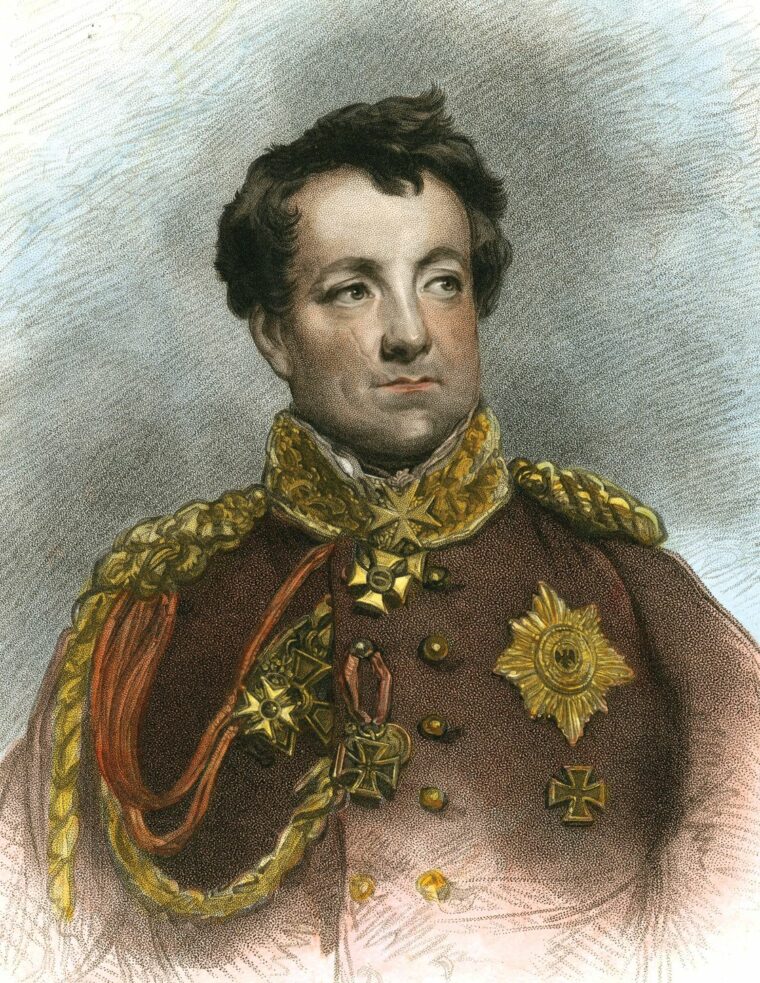
The Army of the North lacked cohesion resulting from the men not being familiar with their commanders and mistrusting their generals. The latter was due to the return of the Bourbon dynasty to power after Napoleon’s abdication in 1814, during which time many generals had taken office under Louis XVIII. This left the majority of the rank and file in the army suspicious of the trustworthiness of these commanders. As a result, this military force was capable of swings between exuberant morale and great feats of arms and gloomy depression. The troops attributed every mishap and delay to treason, and if put under pressure were prone to panic. The army lacked discipline; it was very able but also unstable. Ultimately, it was held together only by the shared fanatical loyalty to the emperor.
The first enemy the Army of the North would encounter in its thrust into Belgium was the Prussians under Blucher. The armed forces fielded by the Kingdom of Prussia for the campaign of 1815 were plagued by low manpower quality, outdated equipment, and overall poor organization, making it the worst army the kingdom employed during the entire Revolutionary and Napoleonic Wars. This was in part brought about by the general lack of national resources due to 25 years of continuous warfare and the largely agrarian and economically underdeveloped nature of the kingdom.
A substantial part of the Prussian infantry in 1815 consisted of untrained, badly equipped militia known as the Landwehr, many of whom came from territories only recently occupied by Prussia and whose loyalty to their new masters was doubtful. The Prussian mounted arm was in the midst of a major reorganization when the campaign of 1815 began. Many of the newly raised cavalry regiments lacked training and cohesion and thus were not ready for active service. The artillery arm needed equipment and was understrength in both guns and manpower.
The poorly equipped, inexperienced Prussian Army of 1815 was held together and prevailed due to the determination of its officers and enlisted men. At the apex of that leadership stood the army commander, Blucher. The Prussian commander was indomitable, resilient, and optimistic. He was always ready for a fight. Blucher was a veteran of dozens of battles. He harbored a pathological hatred for Napoleon. At age 72, the “Old Hussar” possessed an unlimited capacity to inspire his troops and was a team player.
Although a dogged consuming persistence did much to win him battles, Blucher did have drawbacks as a field commander. He tended to wage war by instinct rather than reasoned logic, had a modicum of tactical skill, but in the realm of strategy was completely out of his depth. Fortunately, the field marshal’s military shortcomings were compensated for by the talents of his capable chief of staff, Lt. Gen. Count Neithardt von Gneisenau.
Gneisenau joined the Prussian Army in 1786. After the crushing defeat inflicted upon it by Napoleon in the campaign of 1806, he was instrumental in reshaping the outdated army into a modern national patriotic force. Together Gneisenau and Blucher made a formidable command team. The final word on that extraordinary combination may have come from Colonel Baron Carl von Muffling, the Prussian military liaison to Wellington’s Allied army, when he wrote, “Gneisenau really commanded the army…. Blucher merely acted as an example as the bravest in battle.”
The four infantry corps that made up Blucher’s army were commanded by Lt. Gen. W. Hans Karl Friedrich Ernst Heinrich von Zieten (I Corps), Maj. Gen. George Dubislav Ludwig von Pirch I (II Corps), Lt. Gen. Johann Adolf Freiherr von Thielmann (III Corps), and General Friedrich Wilhelm Bulow von Dennewitz (IV Corps).
Zieten was a tough and effective veteran of the 1813 and 1814 campaigns against the French. Pirch I had served adequately in the German Wars of Liberation against Napoleonic France. Thielmann, a Saxon by birth, had fought in the French Revolutionary Wars as an officer in Saxon service; fought for the French in 1809 and at the 1812 Battle of Borodino; changed sides for the 1813 and 1814 campaigns fighting under the Russian flag, then entered Prussian service in early 1815. He was an experienced combat leader. Bulow was a seasoned veteran with victories over the French at the Battles of Gross Beeren and Denewitz in 1813. Although his corps was not present at Ligny, it was the main Prussian contribution at the Battle of Waterloo two days later.
Except for Bulow, Blucher’s army did not contain Prussia’s tested senior combat leaders. Because it was deemed vital that Gneisenau be paired with Blucher, outstanding Prussian military leaders such as Yorck, Kleist, and Tauenzien, all of whom outranked Gneisenau, could not be assigned to the Army of the Lower Rhine. Hence, the only answer was to appoint younger generals to handle Blucher’s corps even at the price of depriving the army of the services of the better, yet senior, officers. Of the four corps heads, only Bulow was senior to Gneisenau, and so his IV Corps was designated as Blucher’s reserve in the hope Bulow would not find himself under Gneisenau’s orders. In all, the Prussian generals were a reasonably able lot with experience and valor; however, they lacked the élan and tactical flair possessed by the best of their French counterparts.
As the spring of 1815 wore on, Wellington’s polyglot army gathered around Brussels, and Blucher’s I, II, and III Corps spilled into Belgium. Many of the Prussian units, especially the cavalry, never reached full strength. Much of the rapidly expanded army consisted of ill-trained militia armed with barely serviceable weapons: the infantry of I and II Corps consisted of one third Landwehr, that of III Corps one half, and in IV Corps two thirds. Yet Blucher was not concerned with that; morale and zeal mattered most to him, and he felt his men had both attributes in abundance. To Karl August von Hardenburg, Prussian chancellor, Blucher wrote in late May, “In our troops reigns a courage that becomes boldness.”
The Allies planned to defeat Napoleon through their numerical superiority. All their armies were to cross the French frontier between June 27 and July 1. Aside from this broad strategy, Blucher and Wellington had not arranged a concrete plan of operations. At a meeting on May 3, though, they did agree to concentrate their forces on the Quatre Bras-Sombreffe line if attacked so they could support each other. The Prussian remained confident about the military situation and wanted the Coalition forces to attack the enemy “with the most possible haste.” To Hardenburg he said, “Our delay [in attacking the French] can only have the greatest disadvantages.” Blucher was soon proven correct after Napoleon launched his assault into Belgium.
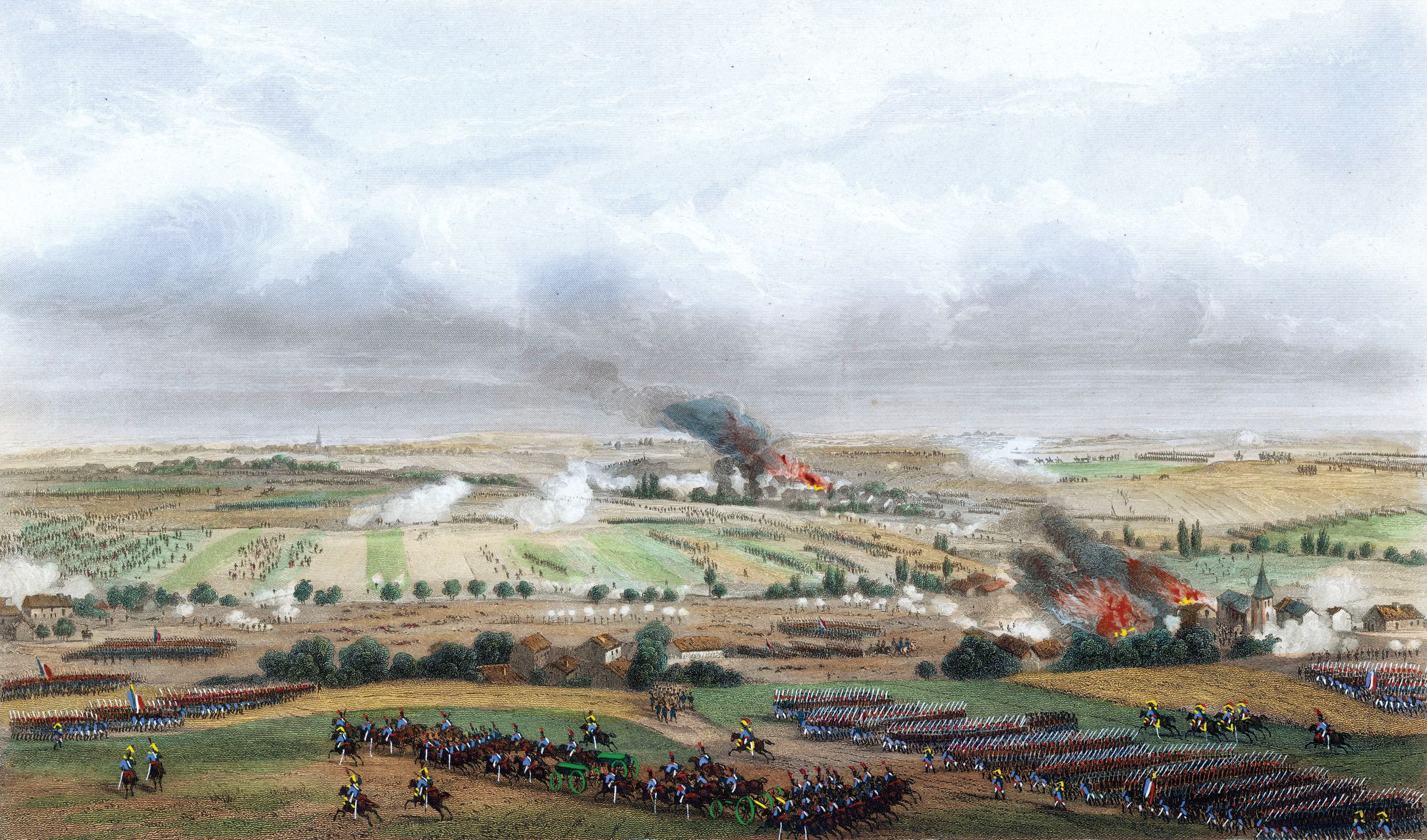
Within two hours of setting off from their encampments on June 15, the French cavalry made contact with enemy outposts on the road to Charleroi. Prussian screening forces were soon forced to retire as Prussian cannons fired three warning rounds signaling the start of hostilities. As the French advanced during the morning, battalion-sized clashes at the towns of Thuin, Marchienne-au-Pont, and Ham-sur-Heure marked the approximately 20,000-strong center column’s progress toward Charleroi. To its left was a mass of 27,000 French infantry and cavalry, to its right another column of 18,000 French foot and horse soldiers. At 11 am sappers and marines from the Imperial Guard breached Charleroi’s defenses, followed by its occupation by French hussars. As the French light cavalry swarmed into the city the Prussian defenders retreated. Napoleon entered the town soon after. With the capture of Charleroi, the French quickly fanned out toward Gosselies and Gilly to the north and east, respectively.
It was not until 9 am that Blucher, at his headquarters in Namur, learned of the French invasion. Faced with a critical situation, the Old Hussar issued orders to concentrate his army at the town of Sombreffe 15 miles northeast of Charleroi. This would be difficult in the face of an advancing enemy since the Prussian Army was spread widely over southern Belgium. Zieten’s 32,533 man I Corps was encamped between Charleroi and Gembloux; Pirch I’s II Corps, numbering 31,000, was situated northeast of Namur; Thielmann’s III Corps of 25,000 troops was below the Meuse River near Dinant; and Bulow’s IV Corps of 30,000 troops was near Liege.
Regardless of the delicate situation he was in, Blucher, after sending word of the French invasion to Wellington at Brussels, wrote to his wife, “Bonaparte has engaged my whole outposts. I break up at once and take the field against the enemy. I will accept battle with pleasure.”
As the Prussian Army moved to assemble at Sombreffe, Zieten, on instructions from Blucher, drew back toward Sombreffe. On the way he placed division-sized forces supported by cavalry and artillery in defensive positions to slow the French advance. By nightfall the Prussian I Corps had successfully broken contact with the oncoming French and bivouacked between Ligny and Sombreffe. Its casualties for the day numbered 1,200 men; the French lost half that number.
By day’s end Blucher had started concentrating his army around Sombreffe as agreed with the Duke of Wellington. I Corps covered the assembly area as II and III Corps raced west. The Prussian IV Corps had been sent orders to proceed to Sombreffe, but those instructions were not received by Bulow in time for him to carry them out. At the end of June 15, Blucher had every reason to believe that the plan formulated on May 3 to combine the Allied armies in Belgium and confront Napoleon in one great battle was on track and would take place the next day. He could not have been more wrong.
As June 15 came to a close, Napoleon sent part of the Army of the North under Marshal Ney to secure the Quatre Bras crossroad, while Marshal Grouchy, with the remainder of the army, pursued the Prussians to Ligny. Napoleon’s intent was to cut the link between his two adversaries, the Nivelles-Sombreffe-Namur road, and as he later wrote, “take the initiative of attacking the enemy armies, one by one.”
Unknown to Blucher, Wellington, described as “always being inclined to accept a battle than to offer one,” had done little on June 15 to comply with the arrangement he had previously made with Blucher. The French assault at Charleroi had not convinced him that Napoleon intended to drive a wedge between the two Allied armies. He believed the French would attack Mons to his right in an attempt to cut him off from his supplies and escape route to the English Channel. It was not until early on June 16 that Wellington realized Napoleon’s true intentions; regardless, Wellington did not issue orders to move his army to Quatre Bras (eight miles from Sombreffe) until 5 am on June 16. The duke’s dawdling prevented his army from concentrating in time to lend direct support to the Prussians at Ligny later that day. Instead, Wellington spent June 16 merely containing Ney’s force at Quatre Bras.
Arriving at Sombreffe during the evening of June 15 and aware that Bulow’s command would likely not join the rest of his army the next day, Blucher nevertheless decided to engage the French in battle southwest of Sombreffe at the village of Ligny on the 16th. The field marshal’s decision was influenced by messages from Wellington assuring him that 60,000 men of Wellington’s army would be in a position to support Blucher by the afternoon of the 16th. In reality, the duke’s information regarding his troop positions was extremely inaccurate. Wellington’s soldiers would only arrive at Quatre Bras after 3 pm on June 16, and only in a steady trickle. It would not be until the afternoon of June 17 that the Englishman’s entire force was finally united.
Around noon on June 16, Wellington rode from Quatre Bras to meet Blucher. The former promised that he would come to the aid of his ally only if the French did not attack him at Quatre-Bras. Nevertheless, Blucher still expected at least the aid of 20,000 soldiers from the Anglo-Dutch army. In anticipation of receiving this support, the Prussian right wing at Ligny was intentionally left in the air ready to connect with Wellington’s men coming from the west.
Meanwhile, thinking only one Prussian corps stood at Sombreffe, Napoleon ordered Grouchy to advance against it on June 16 with the III and IV Infantry and I, II, and IV Cavalry Corps. At the same time, Marshal Ney, leading I and II Infantry, and III Cavalry Corps would drive on Quatre Bras. Napoleon followed with the Imperial Guard and VI Infantry Corps as a reserve, ready to support either Ney or Grouchy as the situation demanded.
In the early morning hours of June 16, Napoleon fully expected the Prussians to continue their retreat east from their exposed position at Sombreffe. He therefore decided to throw the majority of the Army of the North against Wellington’s forces in the area of Quatre Bras and then move on Brussels. Then news reached him that instead of retreating the Prussians were reinforcing Zieten’s corps at Sombreffe. At 11 am the emperor saw the large masses of new Prussian forces (Prussian II and III Corps) approaching the area.
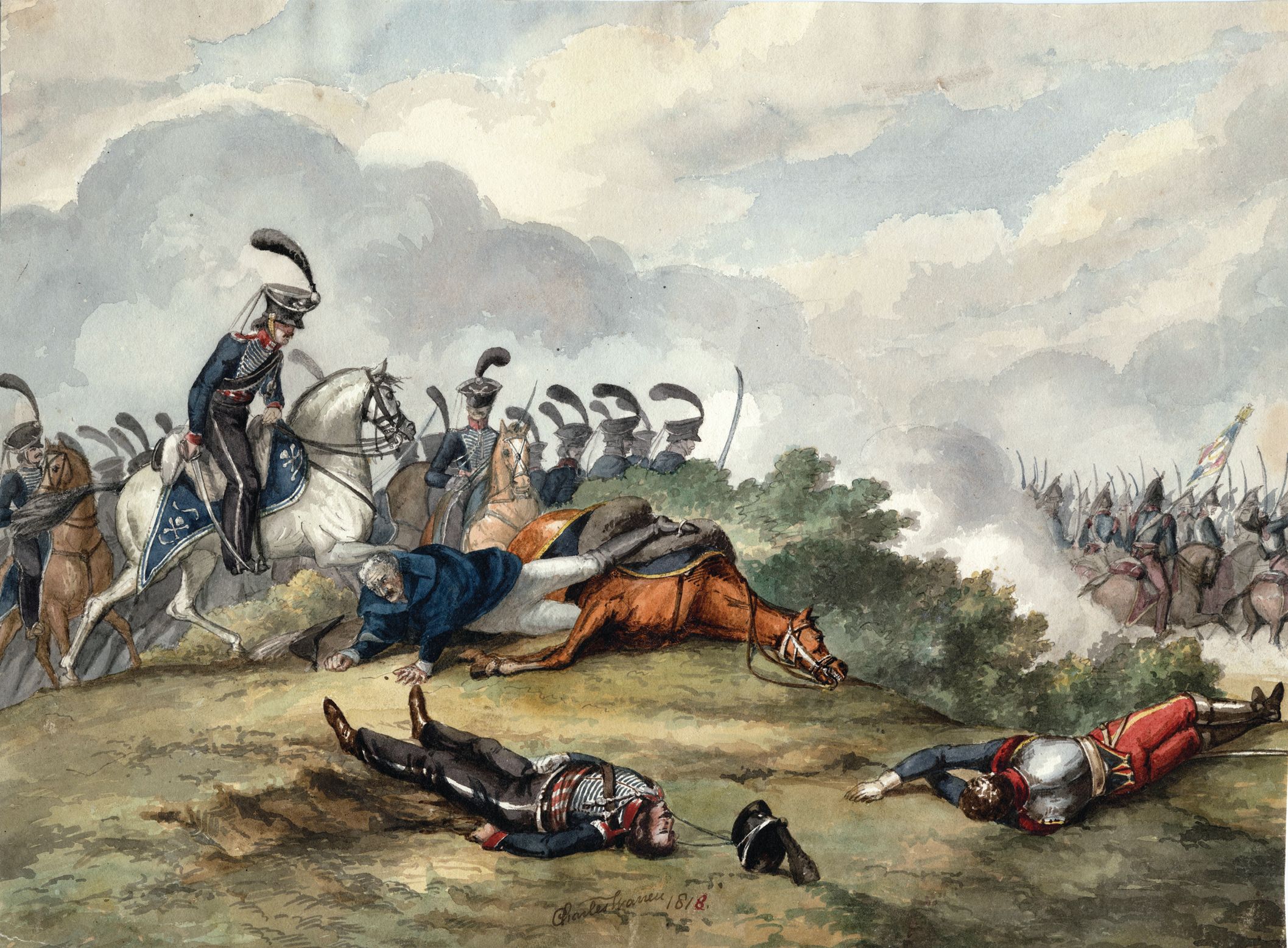
Napoleon decided to change his plan for June 16. He would frontally assault the Prussian forces then staging at Ligny and have Ney bring most of his command from Quatre Bras to fall upon the Prussian right flank and rear. Exclusive of Ney’s force, Napoleon planned to mass 68,000 men, including 12,500 cavalry and 210 cannons, for the battle. With only Vandamme’s infantry and two reserve cavalry corps on hand facing the Prussians at the time Napoleon made his decision, the battle he anticipated could not begin until the rest of the army’s right wing arrived and deployed for action. This would be around 2 pm at the earliest.
As Napoleon revised his strategy, the Prussians concentrated their available forces near Ligny. The terrain there gave a number of advantages to the defenders. First, the undulating countryside contained considerable areas of dead ground in which troops would be concealed. Second, villages like St. Amand, Ligny, Sombreffe, Tongrinne, Boignee, and Baltare contained limestone buildings that could be turned into strongpoints. These sturdy buildings would function as ready-made field fortifications from which raw troops could fight. Third, Ligny Brook was a hard to cross marshland with only four bridges leading out of the Ligny Valley, all of which were dominated by Prussian held villages. Fourth, the hamlet of Brye, north of Ligny and Ligny Brook, covering 600 yards of front, was built like a fortress and could serve as a staging place for Prussian counterattacks or a last line of defense. Fifth, behind St. Amand and Ligny was a long, gentle, clear slope leading up to Brye. If the French were to seize St. Amand and/or Ligny, they would then have to advance up the slope in open terrain against massed Prussian artillery.
One weakness of the Prussian position was its right flank, which rested precariously in the air and on open ground. Another flaw in the deployment was that the Prussian troops were packed in close-ordered formations on rising ground north of Ligny Brook. They proved to be perfect targets for French artillery once the battle opened.
Blucher’s strategy for the battle was one of aggressive defense. After holding up French attacks with his urban strongpoints, he would send his inexperienced men to retake any lost terrain by vigorous counterattacks. The recovered ground would then be held by fresh troops as long as possible. Blucher hoped this strategy would allow him to maintain his position long enough for Wellington to arrive. To implement his defensive plan, Blucher placed Zieten’s I Corps along the line of the Ligny Brook, its left holding Ligny, its center at St. Amand, and its right near the village of Wagnelee. The II Corps was placed in reserve in the rear of I Corps on the Nivelles-Namur road, while III Corps was stationed between Sombreffe and Mazy on the Prussian left. By 3 pm Blucher had established a seven-mile battle line containing 76,000 infantry, 8,000 cavalry, and 224 cannons.
The French Army deployed for its assault throughout the hot early afternoon. Vandamme’s III Corps, supported by Lt. Gen. Baron Girard’s 7th Infantry Division, II Infantry Corps, drew up north of the village of Wangenies just to the west of Fluerus facing northeast toward the Prussians holding St. Amand. Nine squadrons of light cavalry under Lt. Gen. Jean Simon Baron Domon covered its left flank. Vandamme’s artillery did not arrive until after the battle began.
Gerard’s IV Corps deployed at right angles to III Corps facing Ligny, its 24 pieces of artillery drawn up 600 yards from the town. The mile and a half between III and IV Corps was filled by Milhaud’s horsemen. Gerard placed Brig. Gen. Baron Etienne Hulot’s infantry division, with eight guns, behind his other divisions at right angles facing northeast.
Flanking Hulot was Lt. Gen. Baron Maurin’s cavalry division with six guns. Exelman created a line by forming his II Cavalry Corps and 12 cannons to the left of Pajol’s reduced I Cavalry Corps, which also controlled 12 guns and two infantry battalions detached from Hulot. Exelman and Pajol faced the left flank of the Prussians covering the area between Sombreffe and Balatre.
The Imperial Guard Corps, with its 96 guns, and Milhaud’s IV Cavalry Corps were held in reserve a little to the west of Fleurus.
At 2:30 pm a French Guard artillery piece boomed, than again and a third time, signaling the start of the Battle of Ligny.
Vandamme commenced the fight by sending forward the division under General of Division Etienne Lefol. His task was to attack St. Amand to draw as many Prussian reserves as possible into the front line of their western wing. This would ensure a large number of Prussians would be trapped around St. Amand when Ney’s flanking force arrived. Lefol’s regiments, formed in attack columns, rolled forward under the fire of Blucher’s cannons situated north of Ligny Brook. Despite the pounding they took, after 15 minutes the French ejected the three infantry battalions of the Prussian I Corps’ 3rd Brigade defending the village from its houses, walled gardens, and the church. As the retreating enemy fled over Ligny Brook, Lefol’s men followed, but as they debouched from St. Amand they were crushed by 40 Prussian cannons sited north of the town.
Meanwhile, French artillery dueled with their Prussian counterpart causing the earth to tremble. With friendly artillery shells passing over their heads, four battalions from the Prussian 1st Brigade, I Corps, counterattacked and drove the French out of St. Amand.
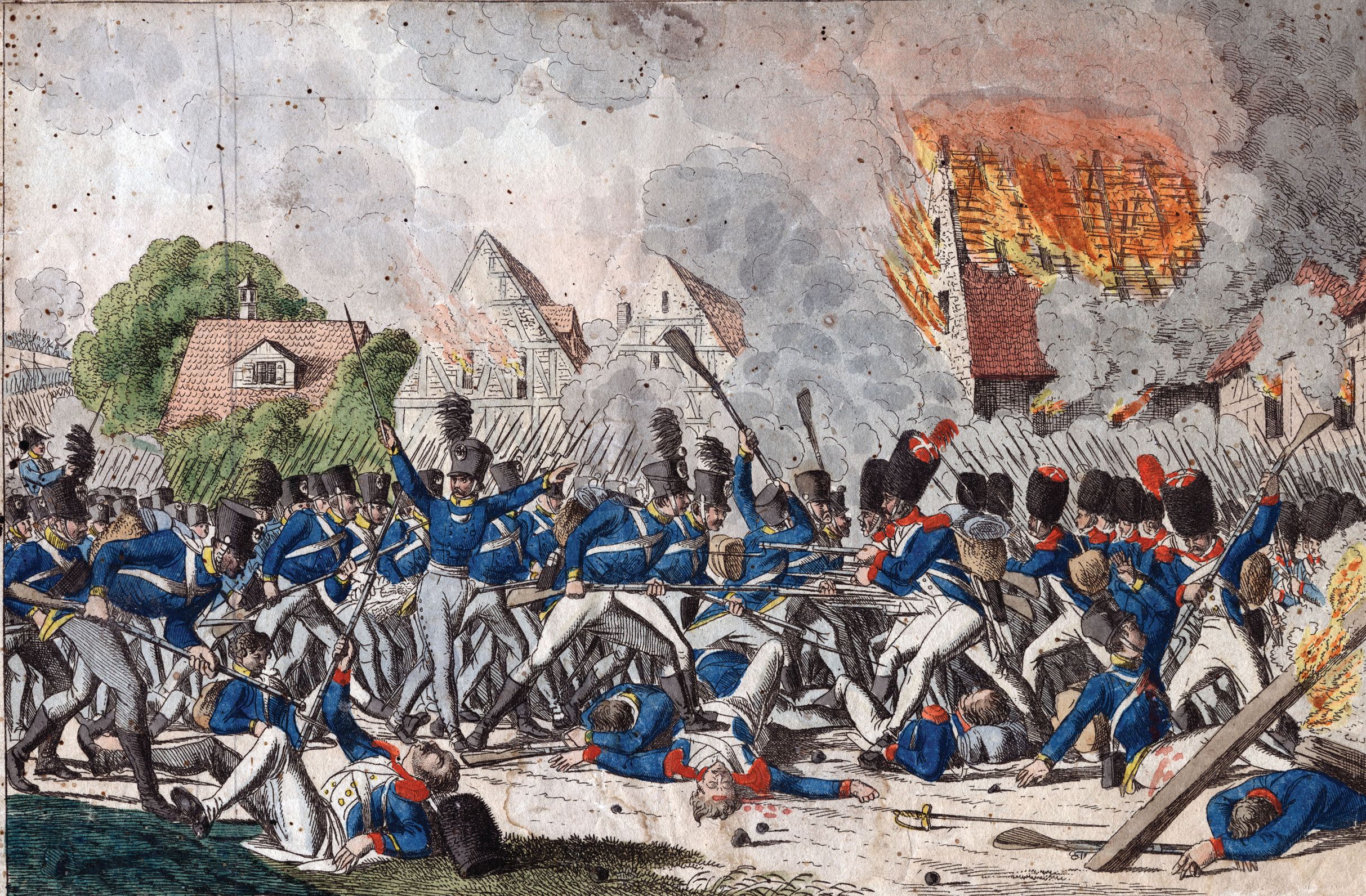
Fifteen minutes after the attack on St. Amand began, French artillery poured fire on Ligny held by Maj. Gen. Henckel von Donnersmarck’s 4th Brigade, I Corps. Much of the French fire was, however, directed against the Prussian guns and reserve infantry beyond Ligny. One French eyewitness recorded, “Our artillery did considerable mischief among the great body of Prussian troops that were posted in mass on the heights and slopes.” Since the French forces were on slightly higher terrain, as well as protected by undulating ground, they fared better against their enemy’s return cannon fire.
Lieutenant General Baron Marc Pecheux’s infantry division, IV Corps, advanced on Ligny in three columns preceded by a line of skirmishers. Prussian musket fire forced one column to retire, but the column made up of the 30th Line Regiment penetrated into the village only to be driven out due to mounting casualties and lack of support. Another assault on Ligny went in led by clouds of skirmishers and under cover of a barrage of French artillery, which blasted the town and the slopes beyond. Although this too was repulsed, three more attacks were made enabling the French to gain a tenuous presence in the village.
On the French right, the cavalry made moves to outflank the eastern margin of the Prussian III Corps, but without infantry support the threats were idle. Hulot could not come to the aid of the cavalry since he was tied up fighting Prussian III Corps units holding Sombreffe and Tongrenelle.
The battle escalated when Girard hurled his 5,000-man division at the village of La Haye, threatening the right flank of the Prussians defending St. Amand. Blucher, from his headquarters at the Bussy windmill, sent 2nd Brigade, I Corps, 5th Brigade, and the cavalry of II Corps to counter the French threat. Following a dense line of skirmishers, 2nd Brigade’s two assault columns drove the enemy out of La Haye. Girard rallied his men and, again moving forward, expelled the now exhausted Prussians from La Haye, causing them to retreat over Ligny Brook. The cost to the French for this achievement was high, including the mortal wounding of Girard.
Reacting to the loss of La Haye, Blucher threw 2nd Brigade at the town, driving the now disorganized and bloodied French out. At the same time, 5th Brigade occupied Wagnelee despite suffering heavy fire from Lt. Gen. Habert’s division, III Corps. To the west, Domon’s light cavalry contained the opposing horsemen during the infantry clash. Reinforcements from the French right flank in the form of Lt. Gen. Baron Jacques Gervais Subservie’s cavalry division helped achieve this.
By 5 pm the Prussian garrison in St. Amand was finally expelled and its mauled battalions retreated to Brye. However, the devastating fire of Zieten’s 12-pounder batteries prevented the French from debouching from the village. Meanwhile, part of Lt. Gen. Baron Louis Vichery’s division, IV Corps, accompanied by two cannons, was thrown into the fight for Ligny. The Prussians responded by reinforcing the town with four battalions from the 3rd Brigade.
As increasingly fierce combat raged among the villages below Ligny Brook, Napoleon, at 5:30 pm, prepared to deliver the coup de grace by having Ney attack their western flank with d’Erlon’s Corps from Quatre Bras, while Lobau’s VI Corps, the Guard, and Milhaud’s cuirassiers crashed through the Prussian center. If all went according to plan, the western Prussian forces would then be encircled and destroyed between Vandamme, the Guard, and d’Erlon. “If Ney carries out my orders well, not a single gun of the Prussian army will escape; it is going utterly to be smashed,” said Napoleon.
As the emperor prepared to deliver his decisive blow, news of an unidentified column was reported heading eastward to Fleurus in the French rear. Then it was learned that the French had abandoned La Haye. Worse, Vandamme wrote that unless he was reinforced he would lose St. Amand. Reacting to the multiple crises, Napoleon ordered VI Corps and part of the Guard back to Fleurus, while sending support to Vandamme.
As the French scrambled to cope with the phantom force bearing down on their left flank and rear, Blucher scrounged together battalions from his I and II Corps and flung them at St. Amand. After close quarters fighting the French fled the northern part of the village. Meanwhile, the Prussian 5th Brigade, supported by artillery, left Wagnelee and attacked La Haye but was thrown back. Blucher was seen in the thick of the fighting on his black charger.
In the nick of time the Young Guard Division, Guard Corps, arrived and with Girard’s infantry rallied and drove back the enemy near La Haye, while Vandamme’s men ushered the Prussians out of St. Amand. On the French eastern flank the villages of Boignee and Balatre were barely wrenched from the Prussians in bitter fighting.
At Ligny, the close quarters combat amid the burning buildings continued unabated. The Prussian 4th Brigade was replaced with fresh battalions after losing 2,500 men out of the 4,721 who entered the fight. The French countered by pouring Vichery’s 2nd Brigade into the inferno.
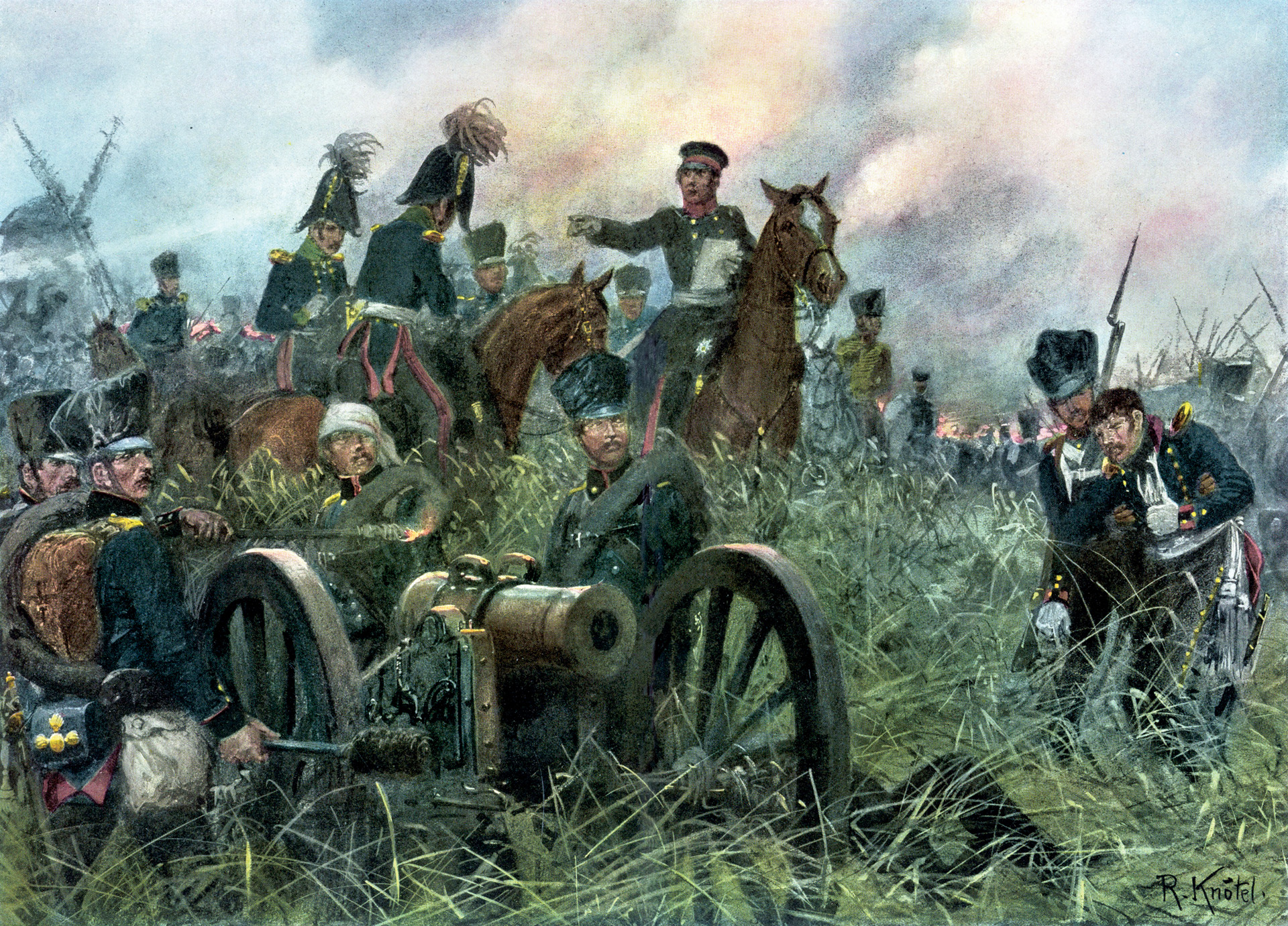
At 6 pm Blucher received the shocking news that Wellington, who had his hands full fighting Ney at Quatre Bras, would not be coming to support the Prussians at Ligny. Undaunted, Blucher resolved to win the battle by himself. He gathered up a few wrecked formations from his second line, as well as the last fresh battalions from II Corps, and shouting to his men, “Fix bayonets and forward!” led them again between Wagnelee and La Haye toward the French. The Prussian tide soon broke upon the immovable three chasseur regiments of the Old Guard Division, which repelled the Prussian assault and then went on to occupy La Haye.
At this point in the battle the 22nd and 70th Line Regiments, Lt. Gen. Baroin Habert’s division, tramped through St. Amand and deployed to its north and, seeing enemy cavalry nearby, went into squares. Charged by enemy cavalry, the 22nd panicked, broke, and was mercilessly hacked down by the horsemen. The 70th retained its square and maintained its position.
It was now 6:30 pm and Napoleon finally discovered the identity of the mystery column approaching from the west. It was d’Erlon’s I Corps, 20,000 strong. Napoleon sent it orders to attack the Prussians at Wagnelee, but it was too late; d’Erlon was marching back to Quatre Bras on Ney’s instructions.
By 7:30 pm, thick clouds of smoke from burning villages mixed with rain and the sound of thunder hung over the battlefield. Suddenly, several Guard batteries commenced firing from south of St. Amand, while others east of Ligny opened a devastating cannonade. This was followed at 7:45 pm by the advance into Ligny of the Guard infantry, General Claude Etienne Guyot heavy cavalry division, and Milhaud’s riders. These formations moved through Ligny and north and south of it. This avalanche was sent forward by Napoleon when he realized the Prussians had no reserves north of Ligny, Blucher having squandered them in the failed counterattack in the Wagnelee-St. Amand sector. As the Guard passed their emperor they shouted, “No quarter!”
As the Guard crashed into Ligny the Prussians buckled but did not break; in fact, they counterattacked but were repulsed. The French infantry soon exited Ligny, reformed their lines, and started up the slopes toward Brye and the heart of the Prussian position. In support rode a massed column of Milhaud’s cuirassiers. As the Guard juggernaut neared, the Prussian line dissolved.
Seeking to avert the unfolding disaster about to overtake his army, Blucher ordered a counterattack with the I Corps cavalry brigade. The 6th Uhlans Regiment charged the 4th Grenadiers of the Guard but was swept away by French musket fire. Then a second and third wave of Prussian cavalry attacked, meeting the same fate as their Uhlan comrades, also being struck by French cuirassiers.
Blucher had charged at the head of the 6th Uhlans and had his horse killed from under him, the animal pinning the field marshal to the ground. Blucher’s aide, Lt. Col. Count von Nostitz, was able to cover his leader with a cloak as French cavalry stormed past. With help from some retreating Prussians, the dead mount was removed from Blucher’s body and the general was placed on a horse and led to a nearby unit of Prussian infantry, which retired to safety.
French forces pushed on from St. Amand and Ligny and attacked Sombreffe, driving back the Prussian 12th Brigade, III Corps, and the remains of the 1st Brigade.
As the Prussians attempted to create a defense at Brye, to the east Thielmann tried to take the pressure off of the Prussian west wing by attacking down the Sombreffe-Fleurus highway with a brigade of cavalry supported by a battery of horse artillery. This small effort was soon derailed when French dragoons attacked the Prussians and drove them back.
In the gathering darkness, Lt. Gen. Antoine Maurin led his French cavalry division, detached from Gerard’s corps, up the Fleurus-Sombreffe road deep into the enemy’s position. He was brought to a halt when Thielmann sought to establish a new defense line between Brye and Sombreffe. Grouchy’s cavalry pressed forward to occupy Tongrinne, just vacated by Thielmann, but could advance no farther.
Not knowing whether Blucher was alive or dead, command of the army devolved on Gneisenau. The army was ordered to retreat to Wavre 13 miles to the north. It was the only real choice since I and II Corps were already streaming away in that direction and the way to join Wellington was blocked by the French. Later that evening Blucher directed the army to march to join Wellington, who on June 17 pulled out of Quatre Bras.
At 5 am on June 17, 14 hours after the Battle of Ligny began, the Prussian Army, after suffering 16,000 casualties as well as the loss of 21 artillery pieces, moved northward. Although they had captured Ligny, the French, who lost 12,000 killed, wounded, and missing in the battle, had never reached the open ground beyond the village, having been stopped by the Prussian rear guard and the dark of night. On June 18, 1815, Napoleon would fight at the village of Waterloo, and his fate would be decided by the timely arrival of Blucher’s Prussians, whom he had failed to destroy two days earlier.
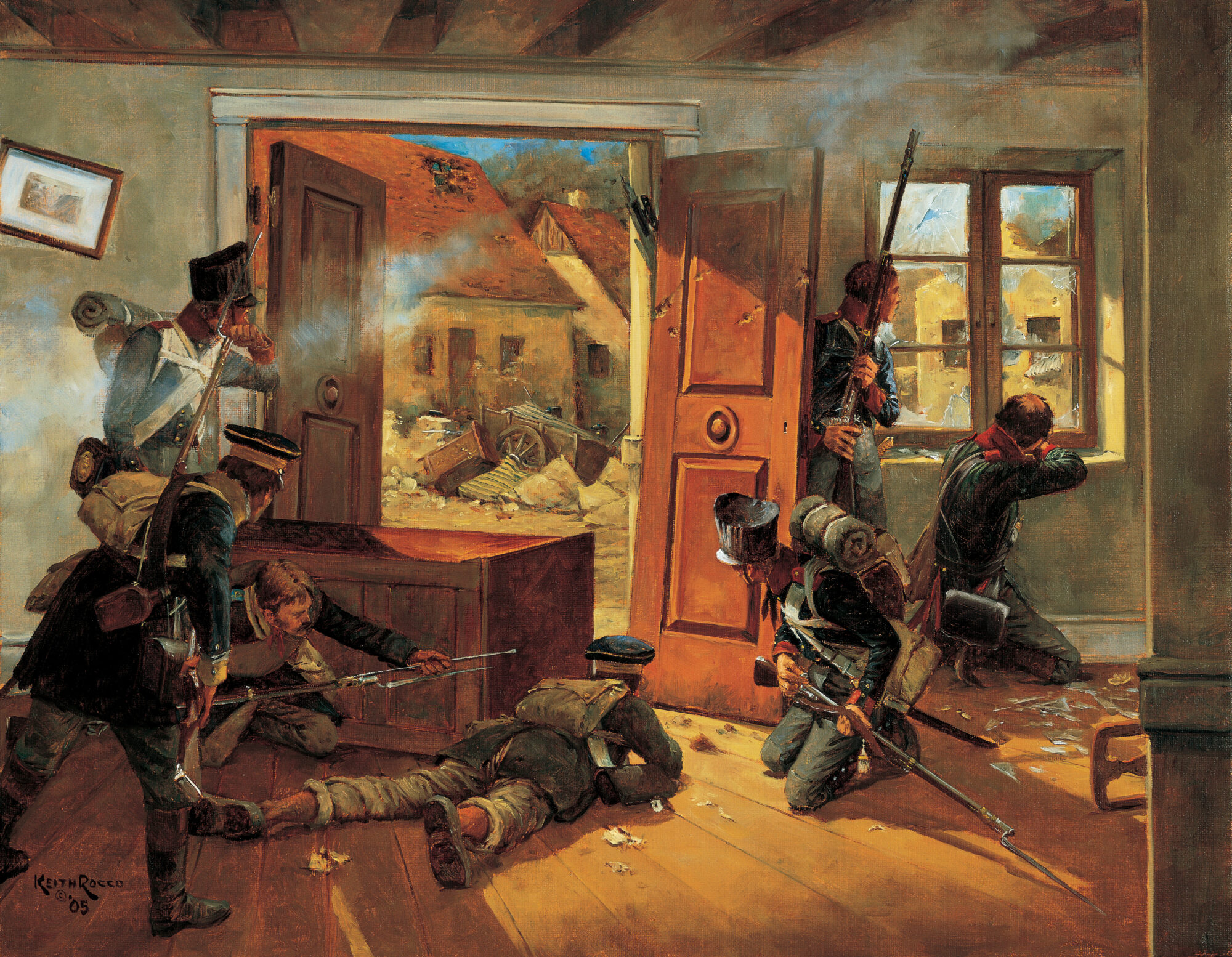
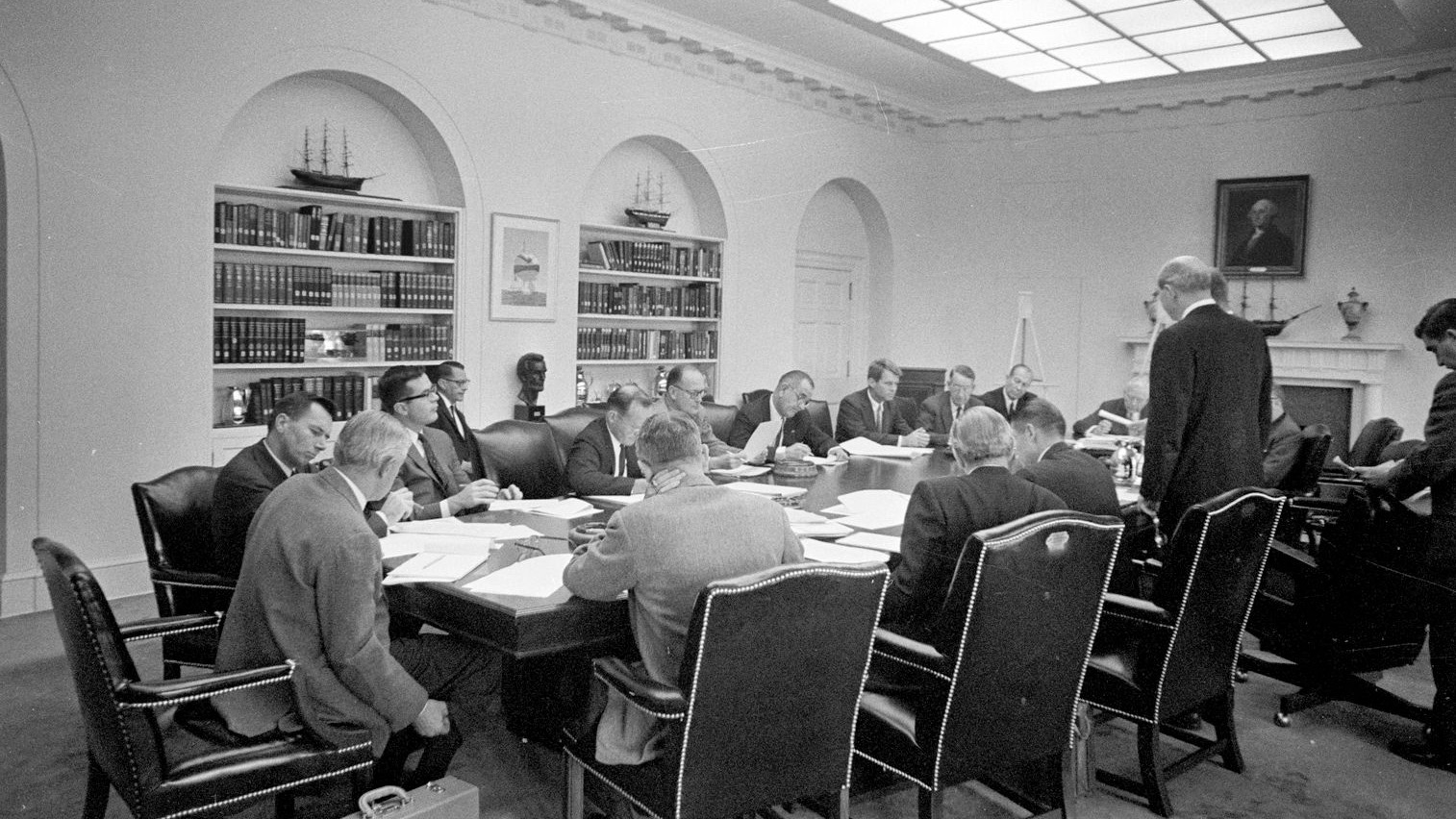
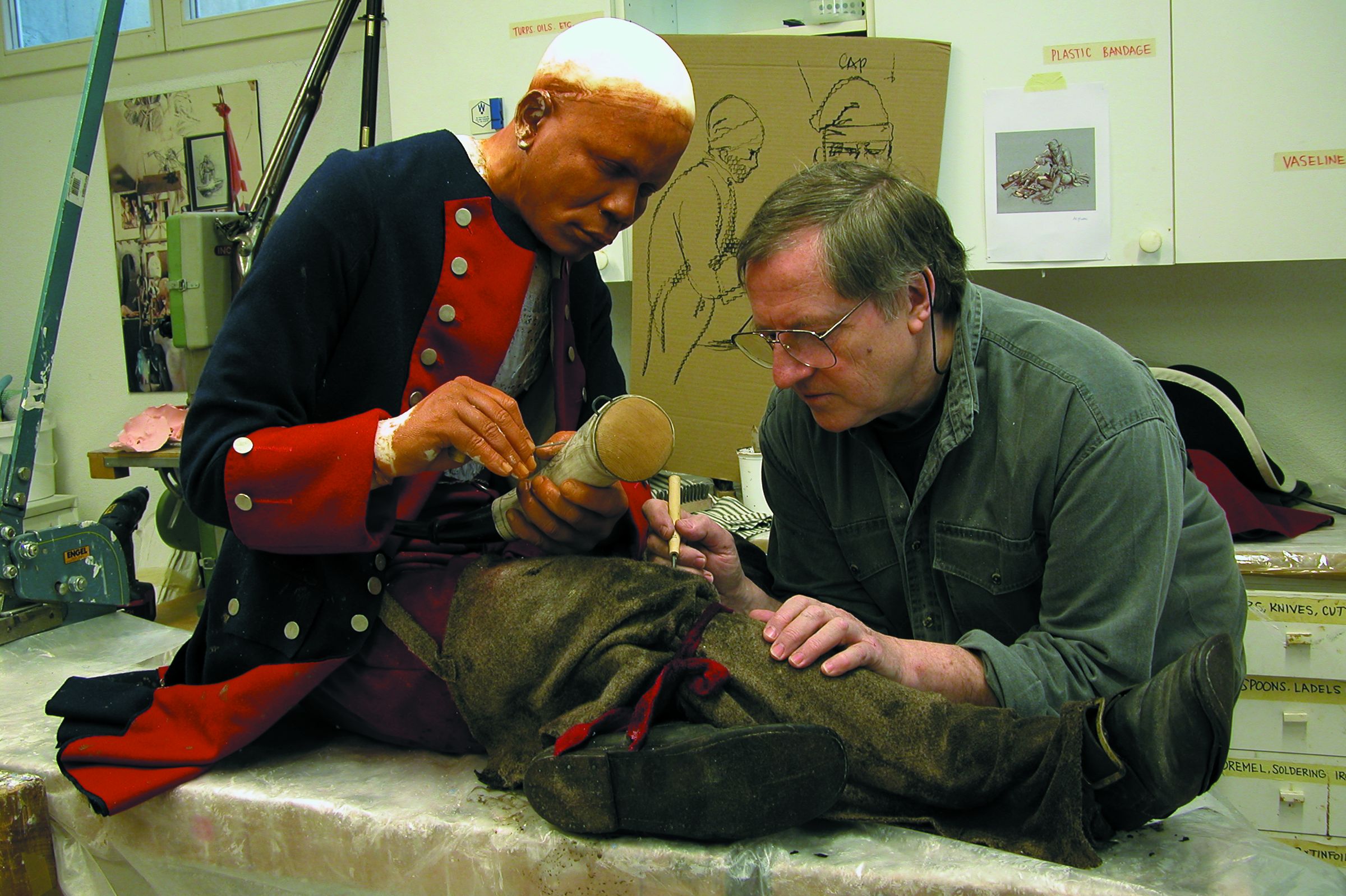
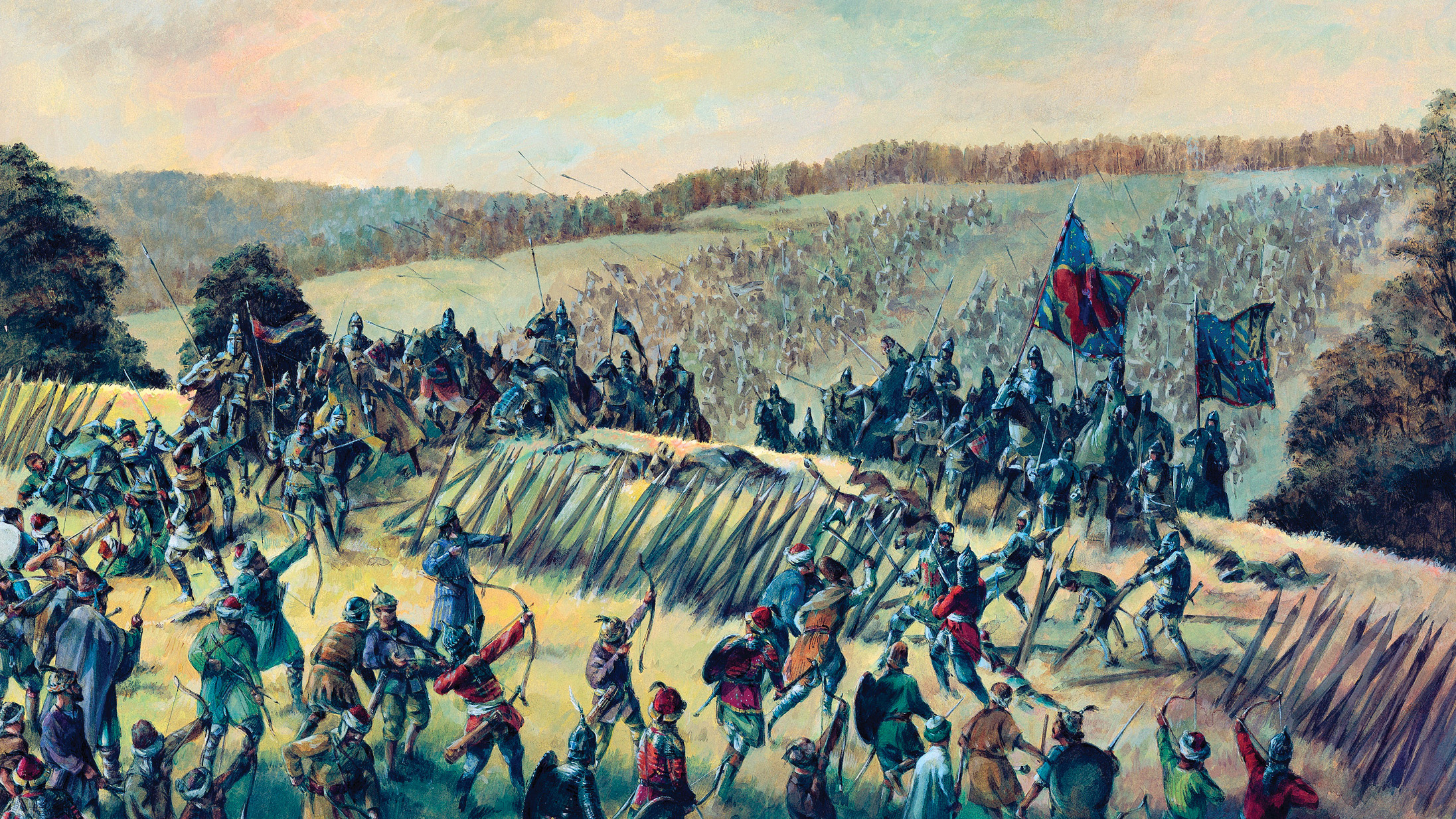
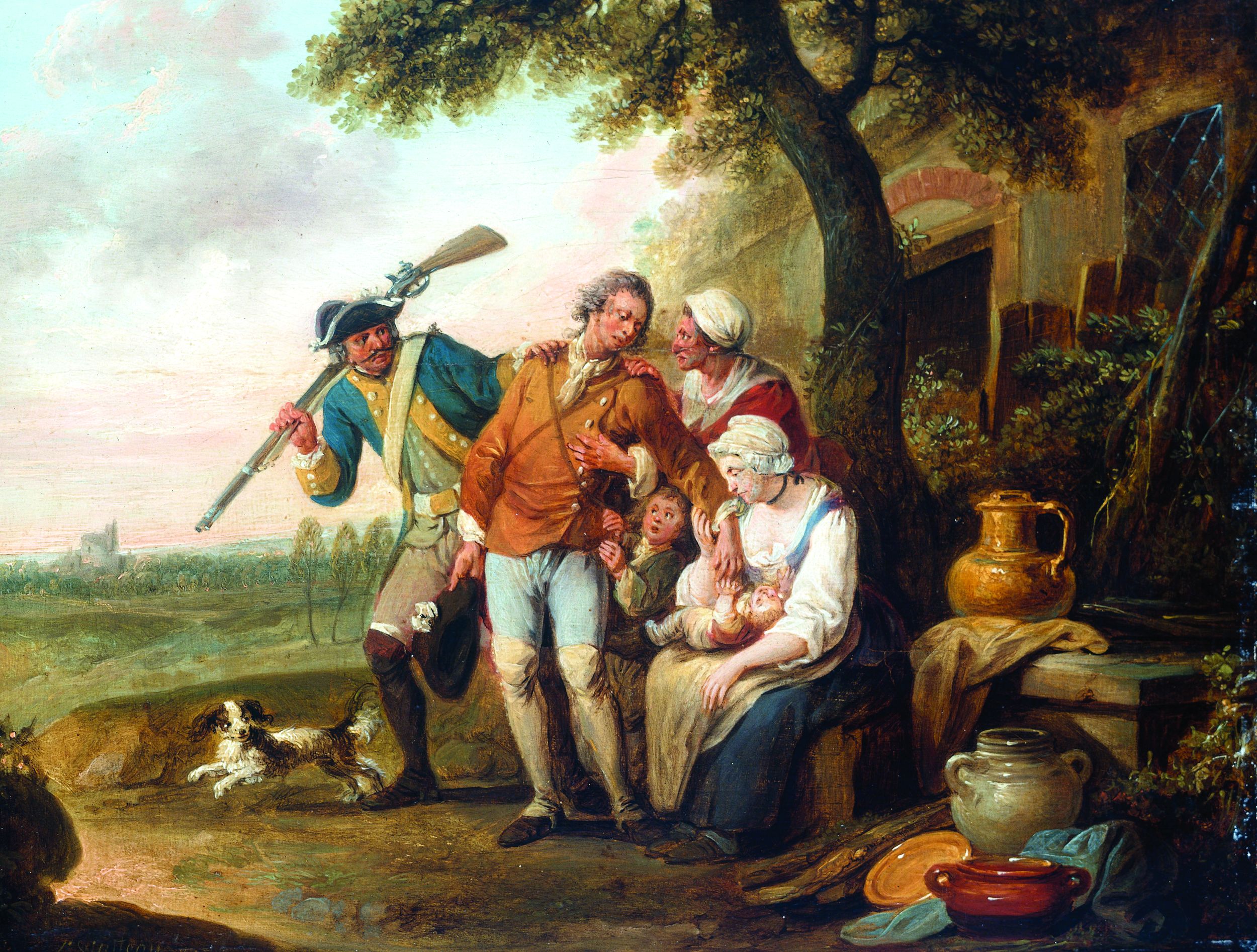
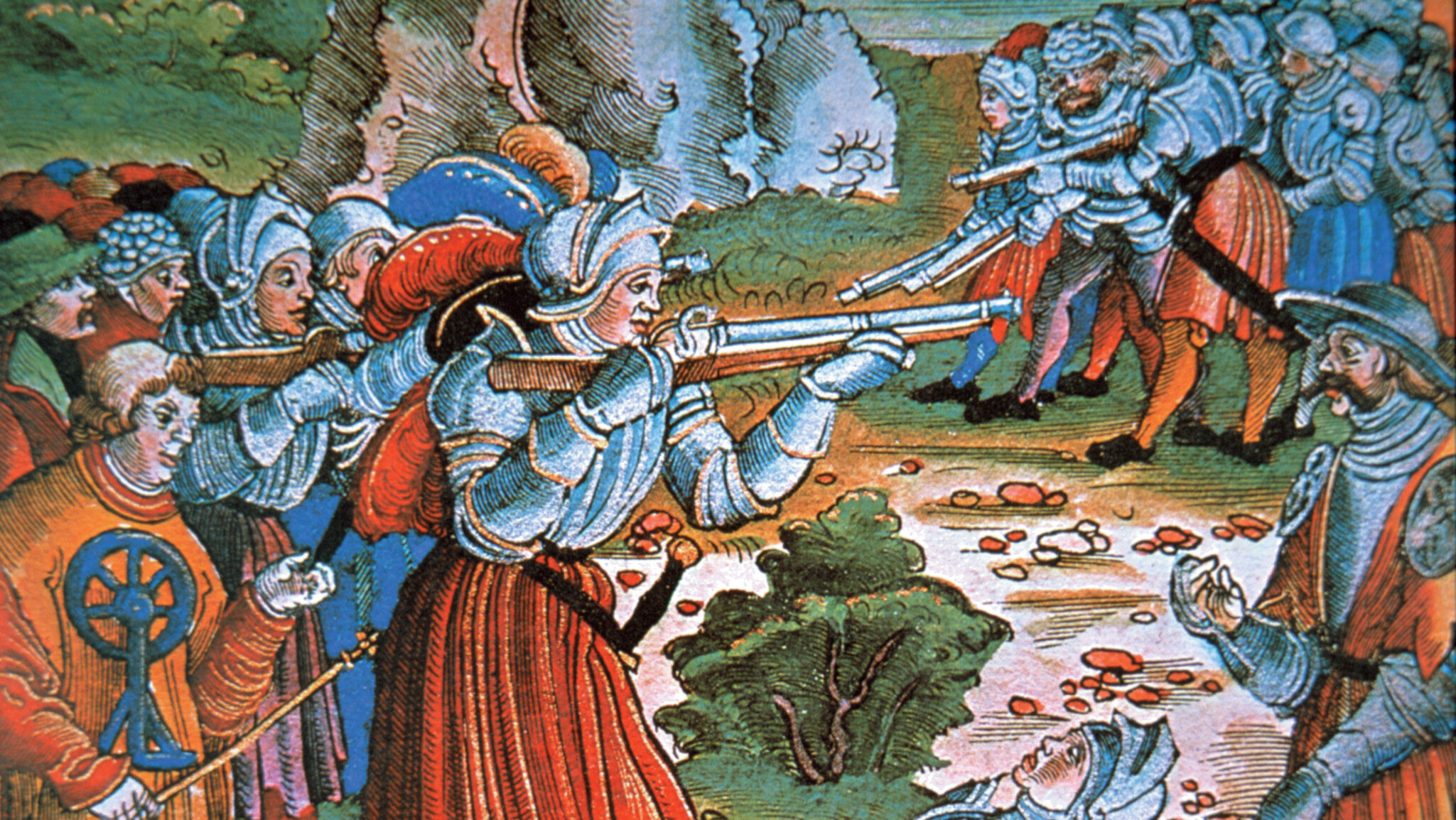
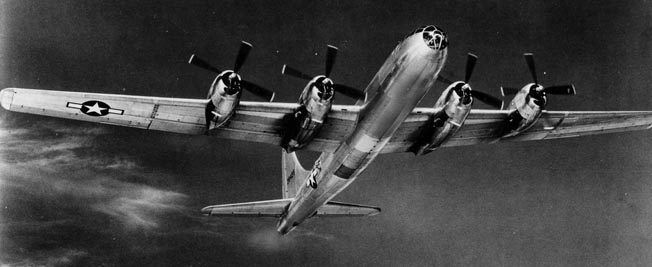
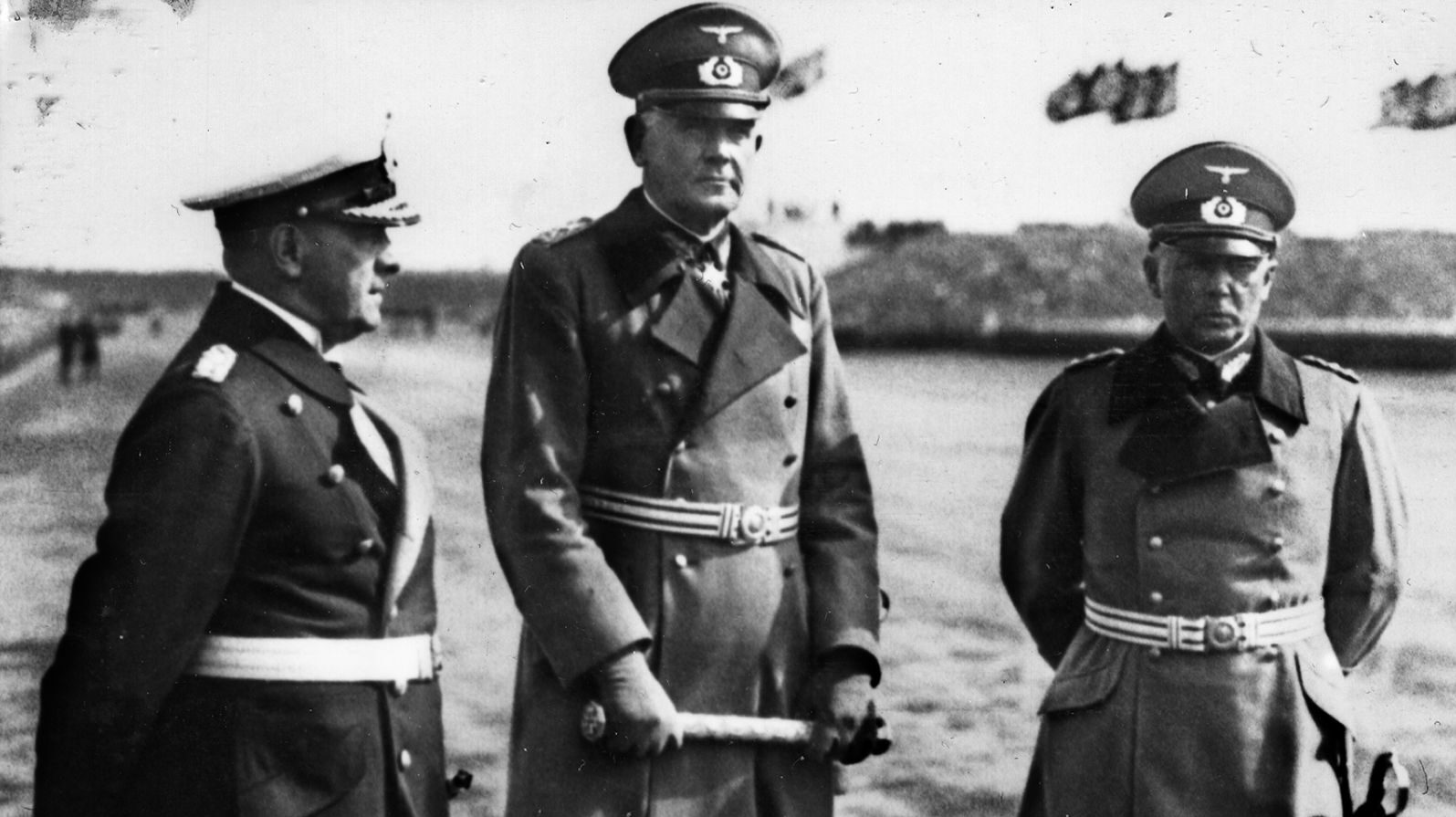
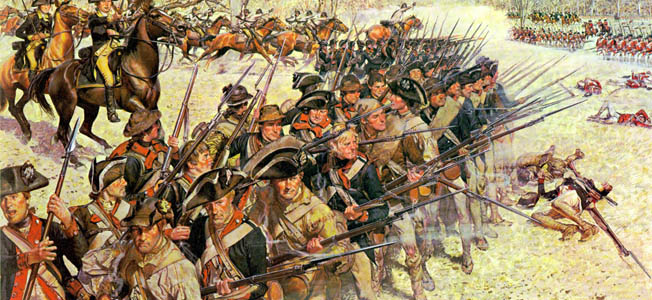
MAPS??